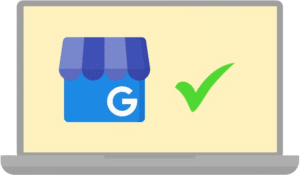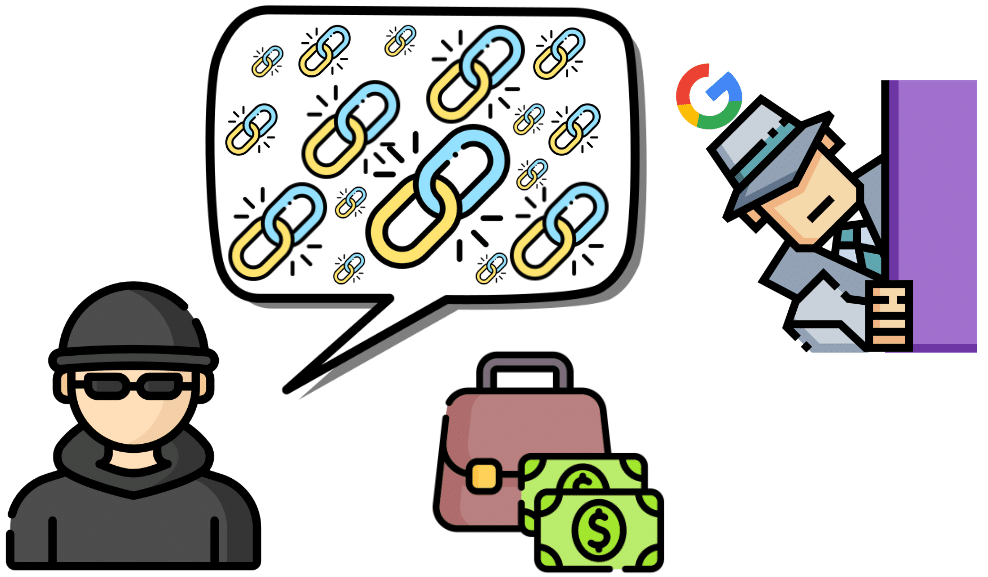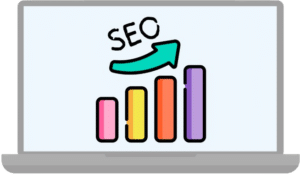
How to Leave a Google Review Without a Gmail Account
Two things that reliably create business for roofers: A once-in-a-generation storm that…
SEO can seem like a minefield of potential pitfalls. Sometimes, you can do more harm than good. And with Google constantly updating its search algorithm, it can feel as if the goalposts are constantly moving.
By arming yourself with a knowledge of the most common mistakes that can damage your SEO, you can give your website its best chance of keeping in Google’s good books.
When it comes to SEO, mistakes can cost money. A drop in rankings, even temporarily, can result in missed leads and untapped revenue. Scale this up to a formal Google penalty, which may permanently demote your rankings, and the potential size of the damage is easy to see.
Impaired SEO means a fall in rankings, which translates as a drop-off in a website’s traffic because fewer people are finding the site. Fewer hits means fewer leads and lost work.
The cost of applying fixes can be significant – from your own lost time and revenue to having to pay someone to sort it for you. If SEO is so damaged a ranking is unrecoverable, an entirely new website may be the only remedy.
Check the rankings regularly using a keyword ranking tool. If you notice a change, Google Search Console can identify any website errors, such as mobile usability, indexing issues or manual penalties.
Alternatively, consult an SEO specialist to audit your website and find out where you’re going wrong.
Optimising for the wrong keywords is one of the most common mistakes that can harm your SEO. You may find it difficult to rank for your chosen keywords, or find that users aren’t searching for your keywords in significant volumes. Either way, it means you’re not receiving the traffic you desire.
Use keyword tools, such as Google Keyword Planner, Ahrefs or Ubersuggest, to find the right keywords for your business. For more information, check out our guide to keyword selection.
If you’re asking, ‘How can mistakes harm SEO?’, a lack of metadata optimisation is a classic example.
Well-optimised, unique meta descriptions and title tags, for example, allow Google to understand your website’s relevance and will help create a temptingly clickable link. The result of not doing so means you’ll fail to rank highly and miss out on leads.

Duplicate content is when the same exact content, e.g. copy, appears on more than one page. When search engines see duplicate content, they don’t know which page to rank higher. Often, the SEO is diluted between the two pages, and they end up both ranking lower.
You can hunt down duplicate meta descriptions, headings and text using tools such as Copyscape or Siteliner.
Another no-no is stuffing your site with your target keywords in a repetitive and unnatural manner. While this used to be a prime SEO tactic, Google will now penalise content that attempts to game its algorithm.
A Google Business Profile allows you to list your business on Google Maps and can get you in the local search results. This step is one of the best ways to be found online, but having inaccurate or inconsistent information won’t help build consumer trust.
Get your description right, add posts and images, and collect reviews to make your profile stand out.

If you care about user experience and ranking highly, audit your backlinks to make sure they’re coming from reputable, relevant websites.
Avoid offers of mass backlink building that seem too good to be true – the links are likely to be spam. Links from spammy or unrelated sites can lead the wrong sort of traffic to your website and put it at risk of receiving a penalty.
Google will always get to the bottom of SEO malpractice eventually.
Google Search Console tells you how well your website is doing, allowing you to troubleshoot problems and make easy fixes. Ignoring its alerts to issues is a sure-fire way to hurt your SEO.
Not treating every page of your website as its own special entity means users and Google won’t appreciate the bespoke content each offers. Make sure you carry out basic on-page optimisation on all the pages, including adding a relevant h1 and h2s, linking content and writing quality copy.
The ‘Error 404 (Page not found)’ code reveals that a page has moved or been deleted, resulting in a broken link. Any links on your website leading to defunct pages damage your SEO because they indicate to Google a negative user experience. So fix those links!
Multimedia – text, video, images and audio – help make a web page accessible. Google reads this as a sign of a quality user experience and will reward a website accordingly.
A lack of multimedia, conversely, will only disadvantage your SEO.
Stock images tend to fall flat with Google and its users. Make sure the media is unique.

Alt tags provide descriptions of the images on your website if they cannot be viewed. They are used by search engines and people with visual impairments, so not having them can impact your website’s relevance and accessibility.
Having a mobile-optimised website covers a number of key Google ranking factors. It suggests your site loads quickly and is user-friendly across a range of devices.
If your website isn’t optimised for mobile – think its coding, style and layout – it can seriously damage your SEO.
You can check whether your website is optimised for mobile using a mobile usability tool.
Another important ranking factor is loading speed. Users don’t want to wait to access a webpage, so Google considers this a negative. Use an online tool to measure page speed and see what you can do to make your site run faster.
In general, a website should have a loading speed of less than 2 seconds. You can check it with the Pagespeed Insights tool.

People want to be engaged by unique, considered, appropriate content. Generic or irrelevant copy doesn’t help a user become a potential customer. It will quickly make someone return to the search results, harming your SEO.
Remember, SEO and user experience go hand in hand – try and find the right balance.
Any of these mistakes can damage your SEO, but now you’re aware, you can act to avoid them. But remember, doing so once does not guarantee success: it is a constant, evolving process. Check your website every few months and make updates where necessary. Never sit still because your competitors won’t!
For more SEO tips for local businesses, check out our Help & Advice pages.
Advance Online are a full-service digital marketing agency based in Surrey, offering web design, SEO, PPC, content marketing and more.

Two things that reliably create business for roofers: A once-in-a-generation storm that…

Two things that reliably create business for roofers: A once-in-a-generation storm that…

The to-do list only gets bigger when you’re running a plumbing business. Sending and chasing invoices, arranging apprenticeships, buying parts, renewing licences…

Until now, Google has offered single-page websites powered by the information in a company’s Google Business Profile. From March 2024, Google will take these websites offline.

A vital consideration for any business with a digital presence, SEO, otherwise known as search engine optimisation, is essential for several reasons, ranging from credibility to visibility.

Combining precise location data and clear business information with live customer feedback, Google Maps has increasingly become a reliable source of information for consumers.
Get notified of the latest blog posts
| Cookie | Duration | Description |
|---|---|---|
| cookielawinfo-checkbox-analytics | 11 months | This cookie is set by GDPR Cookie Consent plugin. The cookie is used to store the user consent for the cookies in the category "Analytics". |
| cookielawinfo-checkbox-functional | 11 months | The cookie is set by GDPR cookie consent to record the user consent for the cookies in the category "Functional". |
| cookielawinfo-checkbox-necessary | 11 months | This cookie is set by GDPR Cookie Consent plugin. The cookies is used to store the user consent for the cookies in the category "Necessary". |
| cookielawinfo-checkbox-others | 11 months | This cookie is set by GDPR Cookie Consent plugin. The cookie is used to store the user consent for the cookies in the category "Other. |
| cookielawinfo-checkbox-performance | 11 months | This cookie is set by GDPR Cookie Consent plugin. The cookie is used to store the user consent for the cookies in the category "Performance". |
| viewed_cookie_policy | 11 months | The cookie is set by the GDPR Cookie Consent plugin and is used to store whether or not user has consented to the use of cookies. It does not store any personal data. |